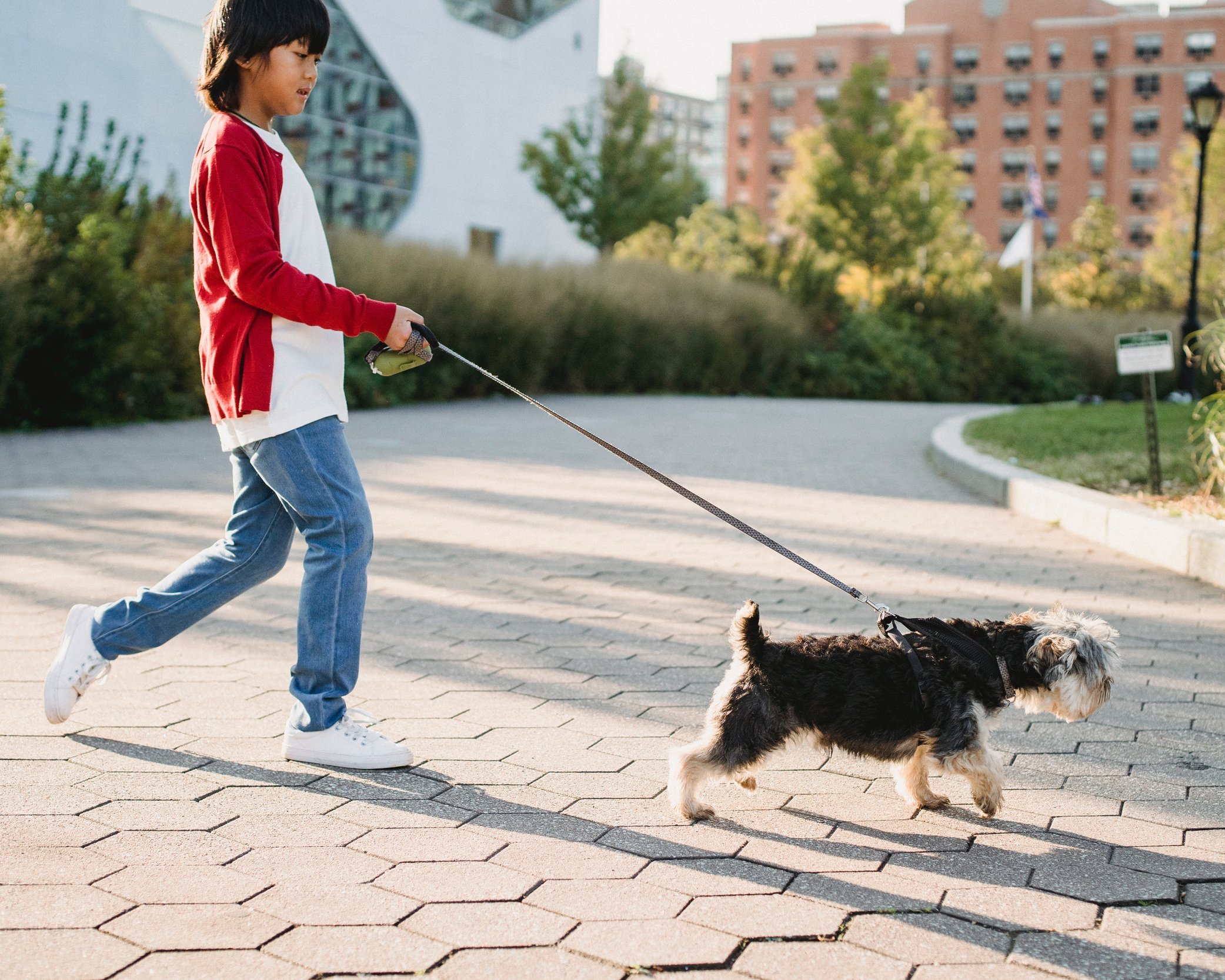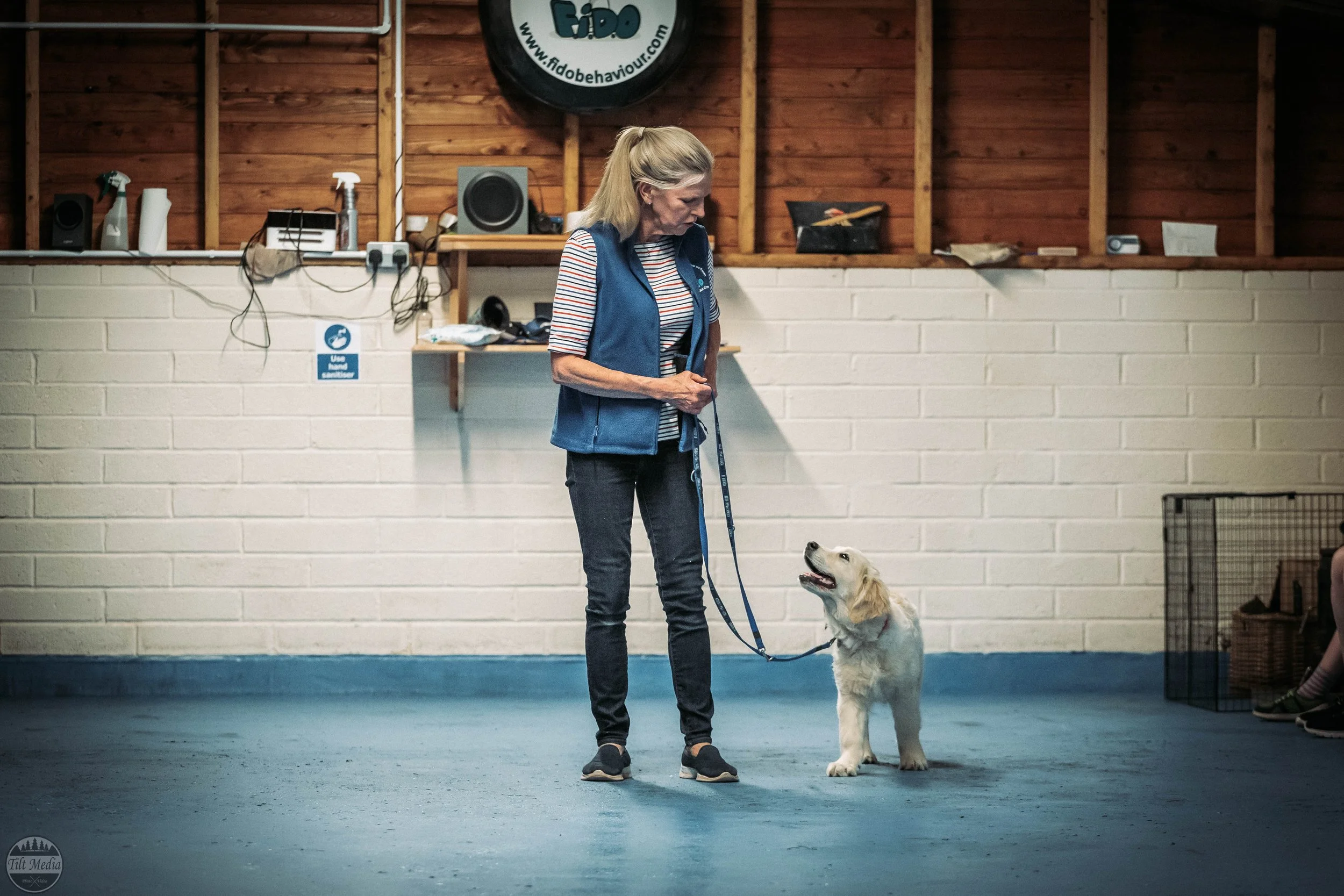Stop your dog pulling on the lead - by not pulling your dog on the lead!
The reason so many dogs pull on their leads and drag their long- suffering owners along the street is because those owners have inadvertently taught their dogs that pulling is the way to move forward and their dog really want to explore.
Think about what happens when a dog reaches the end of his lead. The owner pulls back, the dog braces himself and the owner relents a little, still walking forwards. The dog lunges forward again, the owner tugs again. He is learning that pulling will result in walking forwards and the cycle continues. If you are trying to stand still, sometimes dogs really don’t want to stop and will keep pulling. Owners often follow the pressure on the lead without really being aware that they are doing it. The result is that the dog knows that if he pulls, he will be able to go forwards.
What can you do?
There are many ways to train dogs to walk to heel and the method I favour avoids any tugging or throttling of your pet. Your dog will learn that tension on the lead means he should stop and stay next to you rather than pulling against you.
As with all heel training, this technique requires patience and persistence but it nearly always works very well.
basic principles
Your dog’s lead is a way to communicate and keep your dog safe, not a way to control him. If you pull on the lead, he will learn to pull back and you will end up with a battle on your hands!
Don’t pull on the lead but hold the tension and stand still if he pulls. You don’t want to reward pulling in any way.
Forget about walking to a particular place or in any direction. You are showing your dog that what you want is for him to be next to you wherever you are. Move away in a different direction, calling your dog and praising him when he obeys you.
start where there are no distractions
Heel training is best started somewhere where there are no distractions, such as inside your home. I often recommend that the first few sessions are off lead. This way neither of you can pull on the lead because it’s not there!
Ask your dog to come to you, turn and face away so that he is in the correct heel position, praise and treat him. Lure him there with a treat if necessary.
Take a step forwards and encourage your dog to go with you. The chances are he will comply as you have treats in your pocket.
Praise and treat him, but only if he is in the correct position.
Take another step forward. If your dog leaps ahead of you, don’t follow him. Stop and wait. Get his attention with a high-pitched sound such as a click or a thigh slap.
When he turns to look at you, praise him, say ‘Come’ and turn away from him as he approaches you.
Even if he doesn’t stop beside you, he will pass by your heel, at which point you can praise and reward him. Give him a treat if necessary to keep him there.
Walk forward for a few steps, encouraging your dog to stay near you and maybe giving him a treat reward occasionally for being in the correct place.
He is learning that being next to you is a great place to be and that the sound you make when he is away from you means he should return to you.
Adding the lead
Once he understands this, clip on his lead. For training, a six-foot lead makes it easier for your dog to succeed and means you can hold it loosely with a nice loop.
Once again, encourage or lure your dog to be next to you. Don’t pull him there!
With your dog loosely held on a lead, start to walk ahead and, when he starts to move ahead of you, weave to the left or right to keep him in place, or change direction completely, keeping his attention by using encouraging language and praising him when he reaches the right position. If necessary, you can let him know you have a treat in your hand.
If he continues to go too far ahead and reaches the end of the lead, stop. Do not pull back on the lead; just hold the tension and stand still.
After a second or two click your tongue or slap your thigh to gain his attention. When he looks towards you, praise him and call him to you. As he starts to approach you, turn away and walk off in a different direction with him following you. When he is in the correct heel position say ‘Heel’ and praise him again.
It really doesn’t matter where you go as long as your dog is learning to be next to you. Circles and weaving are fine for a while!
Reward him periodically, but only when he is walking in the correct position and be sure to give him the treat only when his head is next to your leg. Eventually he will learn that where you want him to be is next to you and that if he pulls you will take him further away from where he wants to go. He will learn that a loose lead means walking and a tight lead means standing still.
Final thoughts
Heel training sessions are best when they’re short and sweet!. Try to aim for no more than 10 minutes to start with as your dog will have difficulty concentrating for long.
After this, transfer him to a long training line to allow him some controlled freedom.
You will eventually find that, as your dog is responding to walking without pulling on the lead, he will walk quite happily beside you without a lead at all.




